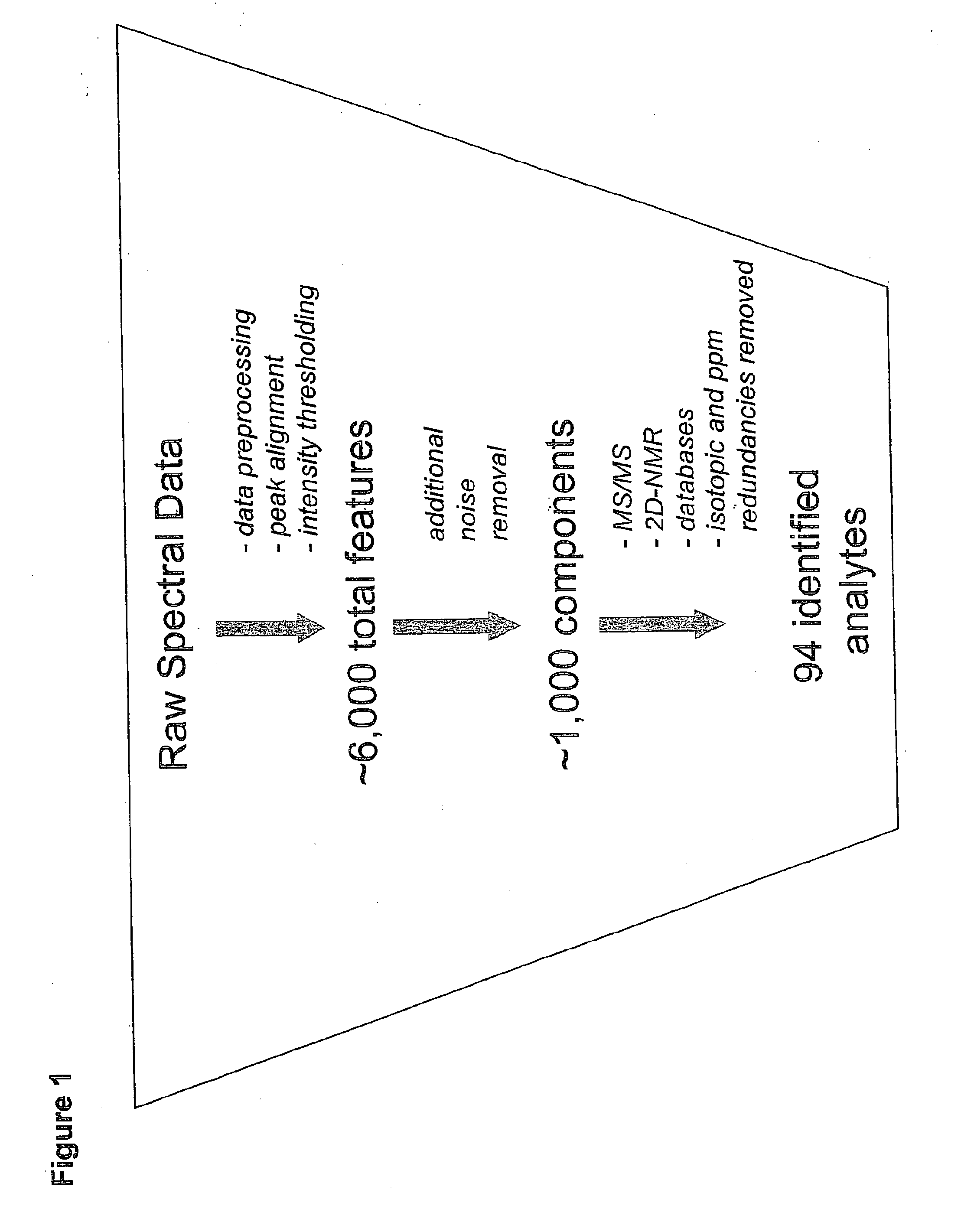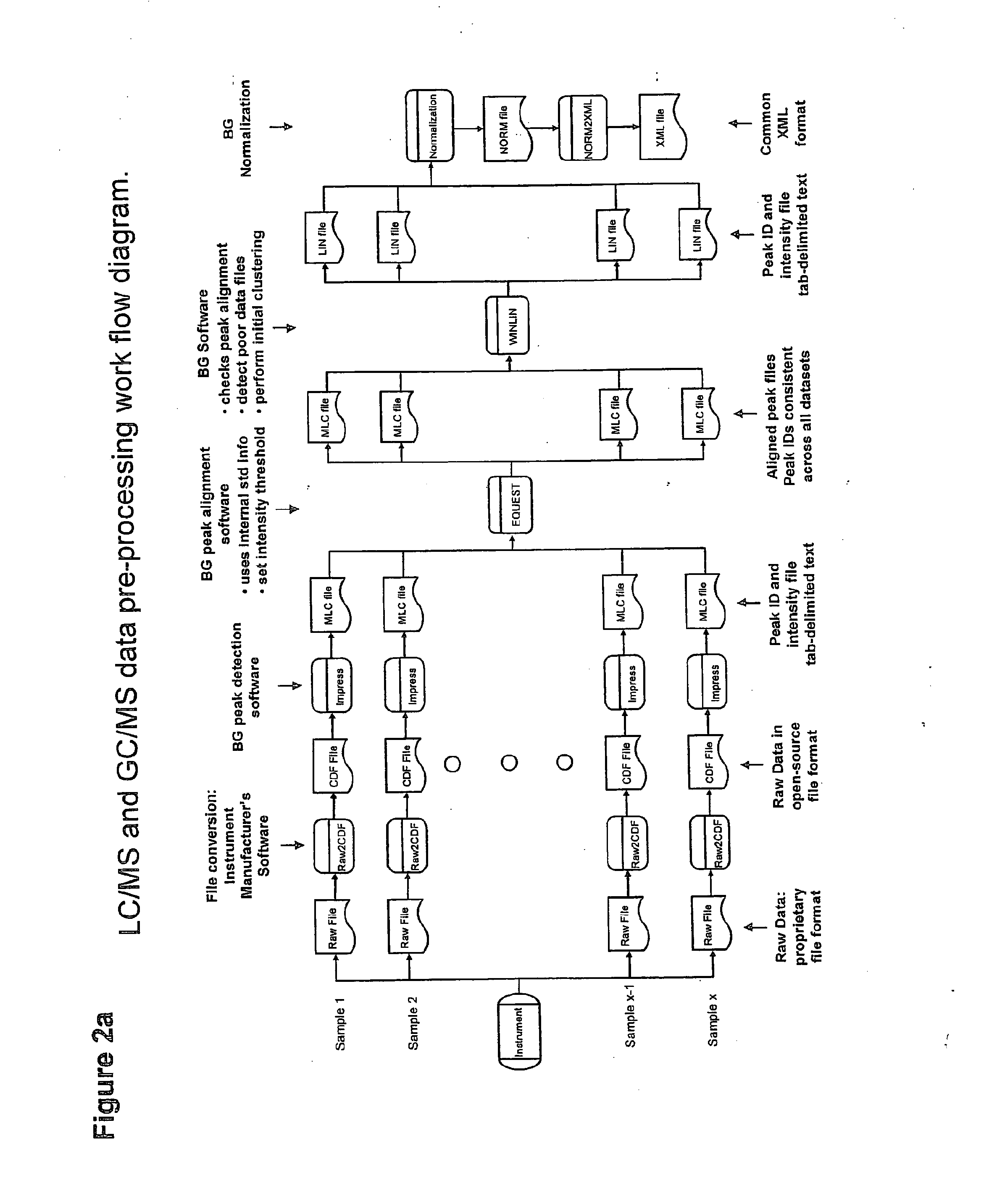Methods for detecting coronary artery disease
- Summary
- Abstract
- Description
- Claims
- Application Information
AI Technical Summary
Benefits of technology
Problems solved by technology
Method used
Image
Examples
example 1
[0053]This example describes the methodology used to identify markers for coronary artery disease. Briefly, eighty (80) male subjects were included in the study and underwent coronary angiography. A classification of the subjects into either diseased or control categories was achieved using the Coronary Artery Disease Prognostic Index [Mark D B, Nelson C L, Califf R M, et al. Continuing evolution of therapy for coronary artery disease. Initial results from the era of coronary angioplasty. Circulation. 1994; 89: 2015-2025]. The Coronary Artery Disease Prognostic Index is an ordinal scale with values ranging from zero to one-hundred and is a measure of the degree of coronary arterial stenosis; this index considers not only the number of diseased vessels but also any significant involvement of the left anterior descending coronary artery, particularly when there is involvement of the proximal segment and / or when proximal segment stenosis is severe. Forty (40) subjects were determined t...
PUM
 Login to View More
Login to View More Abstract
Description
Claims
Application Information
 Login to View More
Login to View More - R&D
- Intellectual Property
- Life Sciences
- Materials
- Tech Scout
- Unparalleled Data Quality
- Higher Quality Content
- 60% Fewer Hallucinations
Browse by: Latest US Patents, China's latest patents, Technical Efficacy Thesaurus, Application Domain, Technology Topic, Popular Technical Reports.
© 2025 PatSnap. All rights reserved.Legal|Privacy policy|Modern Slavery Act Transparency Statement|Sitemap|About US| Contact US: help@patsnap.com



